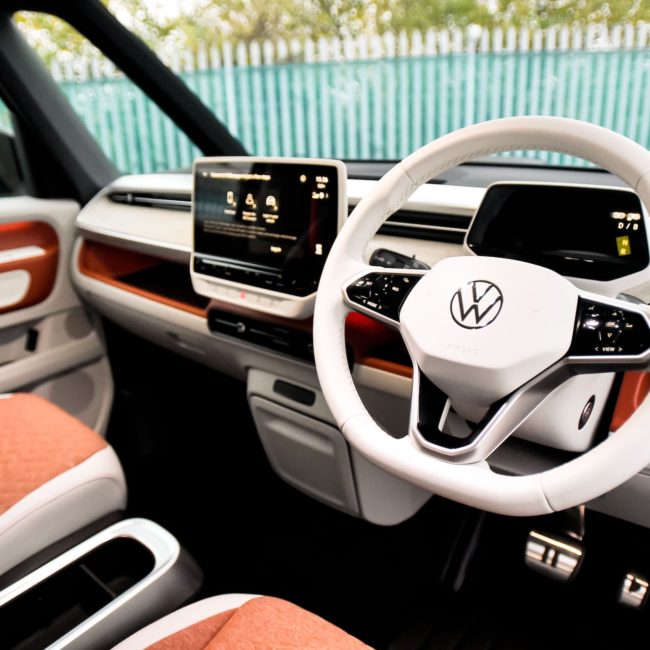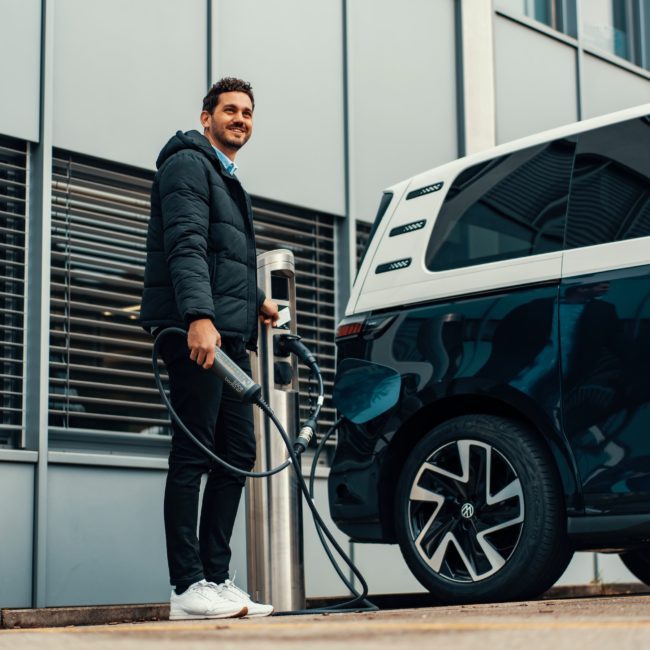We probably all know someone who has turned into a camping fanatic during lockdown. Maybe they converted a van with every intention of hitting the open road and living like a nomad, surrounded by amazing scenery and spending their mornings emptying a chemical toilet.
There’s an attraction to the whole #Vanlife thing that’s undeniable (not the toilet bit) but could you go further and embrace that lifestyle in an Electric Van?
.

The right van
If you’re diving headlong into the van life the most obvious thing you’re going to need is a van. But if you’re going EV there are a whole host of other considerations to keep in mind.
Firstly, is how big of a van do you need? The fewer people that will be travelling means you might not need to go as big. Although, if you’re going to be travelling a lot it might be worth getting a larger van, so you have access to more kit and creature comforts, so it’s more like a home away from home than a place for a short stay.
Also think about where you’ll be going. The world’s your oyster but range is still a thing. Everyone has ideal locations and places they’d love to visit in mind when they consider getting a van conversion, so look at how far away yours is. It might be something you can reach in a single charge or one that needs you to factor in some recharging stops.
Look at the effective ranges on EV vans, find one that at least gets you close to the range you need is a starting point. Anything less means you’re more likely to spend time waiting for your van to top-up charge than you would at your destination.

Powering everything else
Travelling in a van is a lot more comfortable than camping, there’s space for TV’s, laptops, and smaller kitchen appliances to help make relaxing a lot cosier after a day of exploring. Some people even use their van as a mobile office, working, editing, and blogging from the road.
They all need to be powered by something, and it’s worth looking at options that could help ease the burden on your EV batteries.
Thankfully, there are a load of different solutions that can be used as part of setting your van up which can help. Solar panels on the roof, or a smaller wind turbine you can set up when you arrive somewhere are both fantastic choices and can help top up battery banks that can be used to charge phones, laptops, and other tech without increasing the burden on your van’s power supply.
Just keep in mind if you’re buying an already converted van, or doing the work yourself they’ll need factoring into the weight you’re carrying and the budget for your van project. Even a small wind turbine can run up to a few hundred pounds, and that’s before you’ve installed it.
Adding kit like this to your van helps you avoid portable generators that run on diesel etc, and helps you tap into renewable and low emission energy throughout your trip, which is kind of the point of going electric in the first place.

The right places to stop
You can be completely set up for the ultimate relaxing road trip but you’re still going to have to plan around access to EV infrastructure. Thankfully, access to charging is improving, but it’s still important to do your research before you book spaces on campsites or pick destinations.
One of the biggest attractions to travelling in a van conversion is how much more relaxed it is when you arrive somewhere. Everything is already pretty much set up and ready to go. So why add unnecessary stress to your trip by worrying about how much power you have left?
It’s important that you find campsites or pitches where you have access to charging, whether that’s through a dedicated EV charger or via mains access (just keep in mind the mains will take longer).
You should also look at how often you need to stop on any road trip and see if you can factor in any possible top-up charging along your route.
The #Vanlife isn’t for everyone, but it’s possible to do it and go fully electric, you just need to make some adjustments to where you stop and how you plan a trip.


